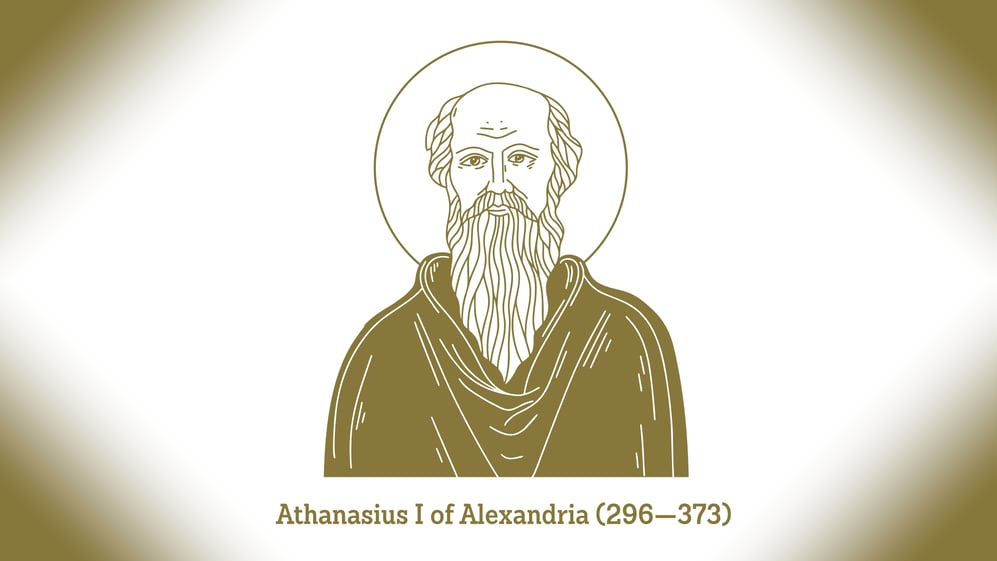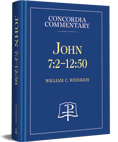Given the high status the Gospel of John gives to Jesus, it is not surprising that certain passages from this Gospel would play important roles when questions arose concerning Jesus’ precise relation to the one God of Israel. In an adapted excerpt from the second volume in the Concordia Commentary series on the Gospel of John, read about the classic interpretation to John 10:30.
The Only True God
The question is easily discerned in Jn 17:3: “This is eternal life, that they know you, the only true God, and him whom you have sent, Jesus Christ” (σὲ τὸν μόνον ἀληθινὸν θεὸν καὶ ὅν ἀπέστειλας Ἰησοῦν Χριστόν). What significance does the conjunction “and” (καί) have? Clearly it conjoins two different persons. But does it allow Jesus Christ to be identified with “the only true God” only by way of a moral or functional unity, that is, a unity in which the one God and Jesus Christ are external to each other and so separable? Or does the distinction entail a relationship in which the “you” and the “him whom you have sent” both lie within the category of “the only true God”?
Such questions were bound to be raised in the context of the strict monotheism of the Jewish faith. And when Christian thinkers were confronted with the religious thought of the Greco-Roman world, such questions required explanation. Yet, no explanation could be given apart from scriptural warrant, and no passage from John’s Gospel was more central in the debates about the above questions than Jn 10:30.
Full Deity of Jesus
Classical Lutheran theology adduced Jn 10:30 to affirm the full deity of the Son. In Preus’ Theology of Post-Reformation Lutheranism, Jn 10:30 is adduced under the rubrics “The Deity of the Son” and “The Eternal Generation of the Son.” Hence, Jn 10:30 is evidence that “all the divine attributes are in the Son.” This is the classic, orthodox appropriation of Jn 10:30: “I and the Father are one [divine substance].” However, this understanding of Jn 10:30 is primarily the result of anti-Arian polemics, which required biblical warrant for the full deity of the Son. Earlier interpretation of the passage was not always so certain of a strict ontological sense of the passage, albeit the unity of the Son with the Father was obviously of importance.
The Classical, Orthodox Interpretation
We would not be far wrong to consider Athanasius (ca. AD 296–373) as the first expositor of the classical, orthodox interpretation of Jn 10:30. Characteristic of Athanasius’ approach is his grouping of three texts which mutually interpret one another and are to be taken together:
10:30 I and the Father are one
10:38 that you may know ... that the Father is in me and I am in the Father
14:9 he who has seen me has seen the Father
Consequence of Interpretation
Indeed, Athanasius explicitly associates these three texts and draws the theological consequence of their mutual implication:
There is one and the same sense in these three passages. For he who in this sense understands that the Son and the Father are one [Jn 10:30] knows that he is in the Father and the Father in the Son [Jn 10:38]; for the Godhead of the Son is the Father’s, and it is in the Son; and whosoever enters into this is convinced that “He that has seen the Son has seen the Father” [Jn 14:9]; for in the Son is contemplated the Father’s Godhead.
Unity of Deity
For our present purpose, it suffices to see that, quite correctly according to the context, Athanasius recognizes the parallel statements of Jn 10:30 and Jn 10:38 and how the latter informs the former: after saying, “I and the Father are one,” Jesus reasonably (εἰκότως) adds, “I am in the Father, and the Father is in me,” in order that he might show “the identity of the deity and the unity of essence” (τὴν μὲν ταὐτότητα τῆς θεότητος, τὴν δὲ ἑνότητα τῆς οὐσίας). The unity of Father and Son (Jn 10:30) exists in and is upheld by the mutual interpenetration of the Father and the Son (Jn 10:30, 38). To illustrate, Athanasius employs analogies used already by Tertullian:
For the Father is in the Son, since the Son is what is from the Father and proper to him, as in the radiance the sun, and in the word the thought, and in the stream the fountain. For whoso thus contemplates the Son, contemplates what is proper to the Father’s essence, and knows that the Father is in the Son. For whereas the Form and Godhead of the Father is the Being of the Son, it follows that the Son is in the Father and the Father in the Son.
The unity of deity in which the Son is as the radiance of the Father’s light grounds the inseparable unity of the operations of the Father and the Son toward the world and humankind. The certainty and surety of the Son’s work is grounded in the fact that it is nothing other than the work of the Father through the person of the Son: “For through the Son is given what is given; and there is nothing but the Father operates it through the Son; for thus is grace secure to him who receives it.”
Blog post adapted from John 7:2–12:50, Concordia Commentary, pages 486–87, 493–94, copyright © 2022 Concordia Publishing House. All rights reserved.
Scripture: ESV®.
Find additional patristic insight on the Word of the Lord and more in the Concordia Commentary series.














